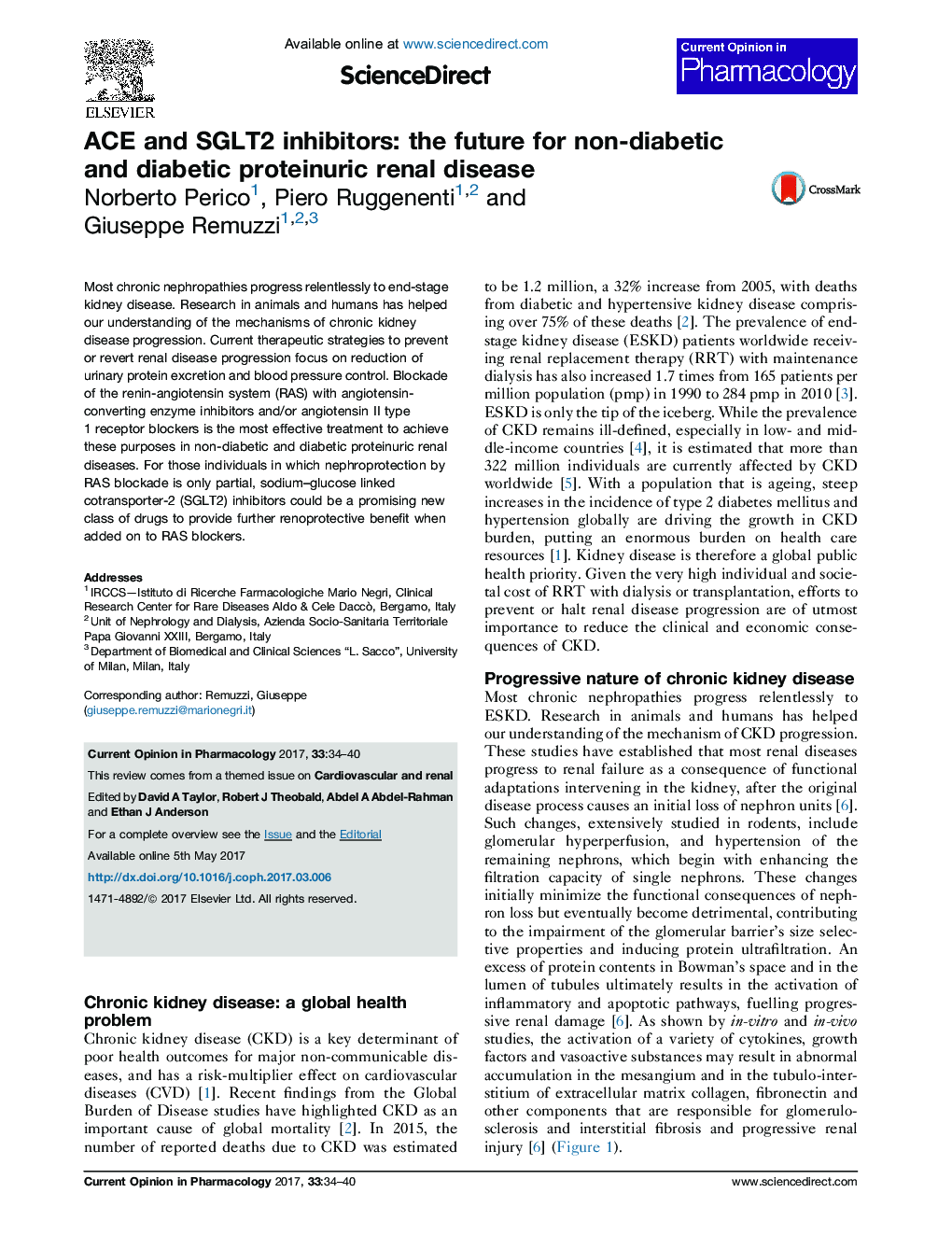| Article ID | Journal | Published Year | Pages | File Type |
|---|---|---|---|---|
| 5554296 | Current Opinion in Pharmacology | 2017 | 7 Pages |
â¢Current strategies to prevent or revert renal disease progression in proteinuric nephropathies focus on reduction of abnormal protein trafficking through the glomerular capillary wall.â¢Blockade of the renin-angiotensin system (RAS) by means of ACE inhibitors and/or ARBs is the most effective treatment to slow renal disease progression.â¢Combination therapy with ACEi and ARBs inhibits the RAS more efficiently than does each agent alone through an addictive effect, but requires close monitoring of patients.â¢Novel treatment strategies, especially for diabetic kidney disease are on the horizon, including sodium-glucose linked cotransporter-2 (SGLT2) inhibitors, but investigating their renoprotective efficacy is still in infancy.
Most chronic nephropathies progress relentlessly to end-stage kidney disease. Research in animals and humans has helped our understanding of the mechanisms of chronic kidney disease progression. Current therapeutic strategies to prevent or revert renal disease progression focus on reduction of urinary protein excretion and blood pressure control. Blockade of the renin-angiotensin system (RAS) with angiotensin-converting enzyme inhibitors and/or angiotensin II type 1 receptor blockers is the most effective treatment to achieve these purposes in non-diabetic and diabetic proteinuric renal diseases. For those individuals in which nephroprotection by RAS blockade is only partial, sodium-glucose linked cotransporter-2 (SGLT2) inhibitors could be a promising new class of drugs to provide further renoprotective benefit when added on to RAS blockers.
